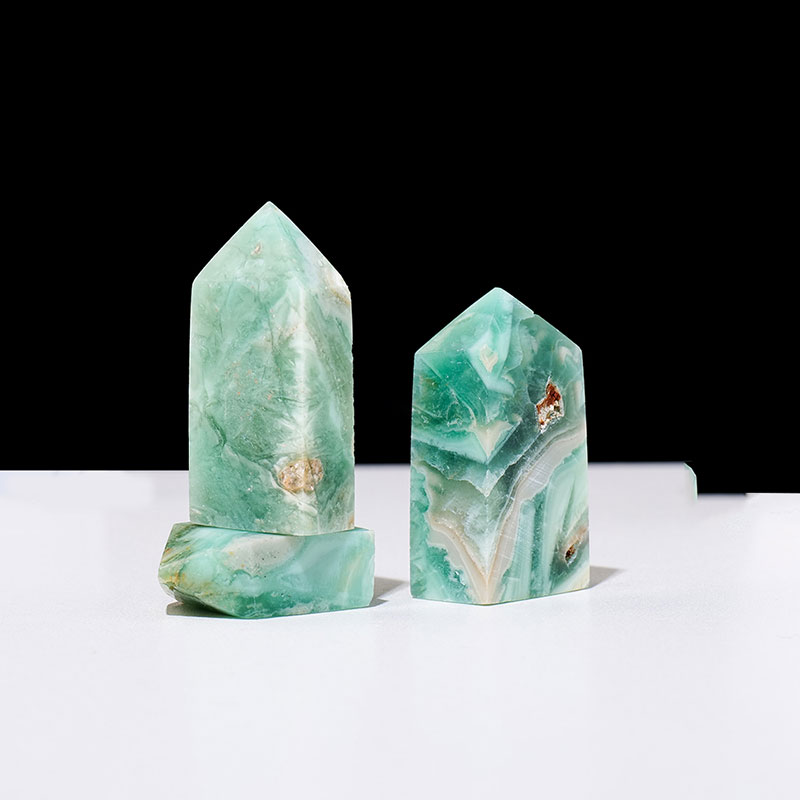Chlorite belongs to the monoclinic system, which is usually a scale-like or dense massive aggregate. The color varies with the iron content, including dark-green, green, gray-green, black, white to light green streaks, pearly to earthy luster, transparent to opaque, hardness of 2~2.5, the density of 2.6~3.3 g/cm, complete cleavage, and earthy or uneven fracture of the aggregate.
Chlorite widely exists in metamorphic rocks and also in sedimentary rocks. It is primarily the product of alteration such as amphibole, pyroxene and mica.
Iron-rich Chlorite is mainly produced in sedimentary iron ore. It can be mined as iron ore if it reaches the industrial utilization index.
Chlorite resources are widely distributed in China. Chlorite deposits have been found in Jiangyou, Sichuan, Xiayan, Liaoning, Qingdao, Shandong, Qilian, Qinghai, and northern Tibet.

Basic Property of Chlorite
[Chemical composition]
The general chemical formula is Y3 [Z4O10] (OH) 2 · Y3 (OH) 6. The crystal belongs to the monoclinic, triclinic or orthogonal (rhombic) crystal system, which is the general name of a group of layered silicate minerals.
In the chemical formula, Y mainly represents cations such as Mg2+, Fe2+, Al3+and Fe3+, Z mainly represents Si and Al, and a small amount of Fe3+and B3+.
Crystal structure
Penninite : monoclinic system; ao=0.52nm,bo=0.921nm,co=2.86nm, β= 95°50‘; Z=4。 Spectral lines of main powder crystals: 7.19 (100), 4.80 (100), 14.3 (60).
Clinochlore: monoclinic system, c2h-c2/m: ao=0.52~0.53nm, bo=0.92~0.93nm, co=1.436nm, B=96 °30’,Z=4。 Spectral lines of main powder crystals: 7.12 (100), 3.56 (80), 2.55 (80), 14.3 (70).
Ocher chlorite: monoclinic system, ao=0.54nm, bo=0.933nm, co=0.704m,=10412. Z=2。
Spectral lines of main powder crystals: 7.05 (100), 3.52 (100), 2.52 (90).
The change of unit cell parameters is related to the substitution of silicon-oxygen tetrahedron [SiO4] by [A1O4] and the content of Mg, Fe, and AL in octahedrons.
The crystal structure of Chlorite is considered as the alternating arrangement of TOT type structural unit layer (talc type structure) and oxyhydroxide layer (Mg (OH) 6 octahedron) in the interlayer domain.
The oxymagnesite layer is composed of two layers (OH) which are the most closely packed, and Mg2+occupies all the octahedral spaces between them, which is a trioctahedron;
There are also Al3+Fe+filled octahedral voids, which are dioctahedral.
The TOT type structural unit layer has [A1O4] instead of [SiO4] and is negatively charged, and the Mg (OH) 6 octahedral sheet is positively charged.
The connection force between the upper and lower structural unit layers is stronger than that between talc layers and weaker than that between mica.
Therefore, the flakes are inelastic and harder than talc. In the structure, the talc layer and the magnesium oxyhydroxide layer are alternately arranged in different ways, forming a variety of polytypes.
Polytypic species are related to the changes of their components and formation conditions.
[Crystal morphology]
Orthorhombic columnar crystals. The crystals are pseudohexagonal crystal flakes, usually produced as scale-like aggregates.
[Physical properties]
The color changes with the composition, and the Chlorite containing magnesium is light blue.
The iron content increases and the color deepens from dark green to dark green. Manganese-bearing chlorite is orange-red to light brown. Chromium is light purple to rose.
Transparent, glass luster to no luster, cleavage surface can be pearl luster. One group of cleavage//001 is complete, and the sheet is inelastic and flexible. The relative density is 2.6~3.3, and the hardness is 2~3.
[Microscopic characteristics]
Light green to yellowish yellow under transmission light, with polychrome and abnormal interference color.
Most of the optical symbols are positive and a few are negative. The optical axis angle shall not exceed 30 °.
penninite: Ng=1.579, Nm=1.576. Np=1.576.
Clinochlore:Ng=1.594~1.576,Nm=1.594~1.572,Np=1.54~1.572.
Oolitic chlorite: Ng=1.658, Nm=1.658.
[Genesis]
Chlorite is mainly the product of medium and low-temperature hydrothermal process, shallow metamorphism and sedimentation.
In igneous rocks, Chlorite is primarily the product of alteration of pyroxene, amphibole, biotite, etc. Iron-rich Chlorite mainly occurs in sedimentary iron ore.
[Use]
The chlorite aggregates with bright color, dense, fine, tough texture and large lump size can be used as jade carving materials, which is called chlorite jade.
Chlorite Healing property
It is said that Chlorite is an active and effective healing stone, which is very beneficial to the environment or personal energy field.
If it is shared with amethyst, it can remove the attached entities that invade the human body. If it is shared with carnelian and ruby, it can protect people from mental distress and help them eliminate the shackles of secular interests.
Chlorite helps remove toxins and promote the absorption of vitamins A, E, iron, magnesium and calcium.
It is an effective painkiller, which can eliminate skin tumors and liver viruses, and promote the reproduction of beneficial bacteria in the human body.
How to use Chlorite
Holding the Chlorite in hand or in an appropriate position can form a protective net around the human body to resist negative energy or entities.
Conclusion:
The chlorite group is a layered silicate mineral group mainly composed of iron, magnesium and aluminum, with crystal structure similar to that of mica.
Human beings have known more than ten kinds of independent species.
It generally occurs in metamorphic rocks, hydrothermal metamorphic rocks and hydrothermal ore veins with low temperature and pressure.
Generally, the Chlorite we see is “clinochlore” or oolitic Chlorite containing iron and magnesium. “The more iron, the darker the green will be.
The purplish red ore body containing chromium is called” chrome chlorite.”
